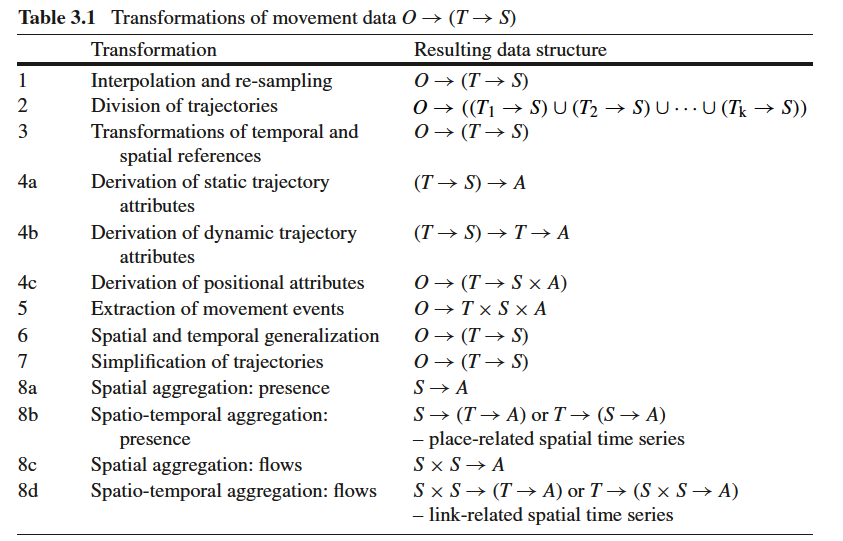Visual Analytics of Movement
Book
Andrienko, G., Andrienko, N., Bak, P., Keim, D., & Wrobel, S. (2013). Visual analytics of movement. Springer Science & Business Media.
Introduction
This chapter provides an informal introduction of the main concepts related to analysis of movement. The concepts are introduced by illustrated examples, which also demonstrate some techniques that may be used for visual exploration and analysis of movement data. The examples show how the capabilities of the computer and human can be combined to extract knowledge from movement data. This sets the stage for introducing the concept of visual analytics. The chapter also explains the objectives and the structure of the book.
Movement data represent paths of moving objects through space over time. These paths are usually continuous, that is, a moving object occupies a certain spatial position at any time moment. However, for technical reasons, movement data are discrete. They reflect the spatial positions only at some time moments. There is an inevitable uncertainty concerning the positions of the moving objects in the times between the timestamps. The longer the intervals between the timestamps are, the higher the uncertainty.
Conceptual Framework
Space - a set consisting of locations or places. Ways of specifying positions in space:
cooridanted based referencing: positions are specified as tuples of numbers representing linear or angular distances to certain chosen axes or angles
division based referencing: referring to compartments of an accepted geometric or semantic based division of the space, possibly, hierarchical
linear referencing: referring to relative positions along linear objects such as streets roads rivers pipelines. Example - street names plus house numbers or road codes plus distances from one of the ends
Time - a continuous set with a linear ordering and distances between elements, where the elements are moments or positions in time.
Object - can be classified according to their spatial and temporal properties.
Movement is the change of the spatial position of one or more objects over time. Moving objects and spatial events
Authors describe the phenomenon of movement in terms of elements of the four sets and relations within and between the sets and introduce multi-perspective view of movement consisting of mover-oriented perspective, space-oriented perspective, time-oriented perspective, and event-oriented perspective.
Transformations of Movement Data
Interpolation and resampling
division of movement tracks and trajectories
alignment of temporal and spatial references
derivation of new thematic attributes
extraction of movement events
spacial and temporal generalization
spacial and temporal simplification
spacial and temporal aggregation
Visual Analytics Infrastructure
Interactive Visualizations
Interactive Filtering
Dynamic Aggretion
Visual Analytics focusing on Movers
Visual Analytics focusing on Spatial Events
Visual Analytics focusing on Space
Visual Analytics focusing on Time
